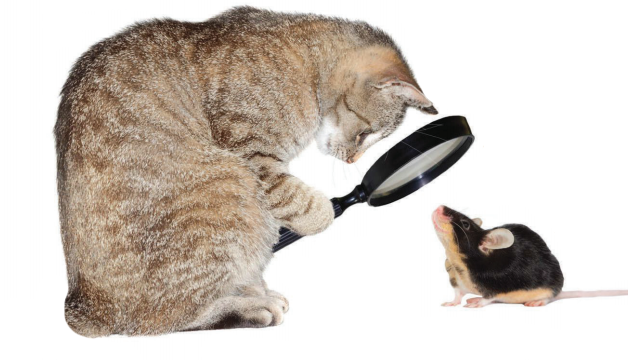Eye Opener: Be Aware of Vision Deterioration In Your Pet

Nuclear sclerosis also aspects people, and is the reason that we need reading glasses after the age of forty. Nuclear sclerosis does not require surgical intervention, but an exam with an ophthalmologist can di$erentiate between true cataract formation, and age-related nuclear sclerosis. In patients diagnosed with true cataracts, surgical correction of cataracts is highly successful, will restore vision and return your pet to their normal activities. In fact, most patients who undergo cataract surgery come into the hospital unable to see, and leave that same afternoon with vision restored! In older patients whose vision loss/deterioration is due to age-related changes that cannot be medically or surgically reversed, pet owners must adjust to living with a pet who has limited or compromised visual capacity. Fortunately, the majority of our pet population can acclimate well to Nuclear sclerosis also aspects people, and is the reason that we need reading glasses after the age of forty. Nuclear sclerosis does not require surgical intervention, but an exam with an ophthalmologist can differentiate between true cataract formation and age-related nuclear sclerosis. In patients diagnosed with true cataracts, surgical correction of cataracts is highly successful, will restore vision and return your pet to their normal activities. In fact, most patients who undergo cataract surgery come into the hospital unable to see, and leave that same afternoon with vision restored! In older patients whose vision loss/deterioration is due to age-related changes that cannot be medically or surgically reversed, pet owners must adjust to living with a pet who has limited or compromised visual capacity. Fortunately, the majority of our pet population can acclimate well to loss of the visual sense, as they rely much more heavily on their sense of smell and hearing than people do in order to assess the environment around them. Appealing to these senses to help your visually limited or blind pet adapt to vision loss can be as easy as refraining from rearranging the furniture in your home, utilizing automatic scent dispensers to lay-out a “smell map” of the house, or using commercially available scented adhesive buttons on sharp edges, doorways, and other objects that your pet may commonly run into.
Safety is also important for our older pets who may have vision impairment. Block or fence pools or ponds, place baby gates at the top of all staircases, and always speak softly prior to touching any visually impaired animal to alert them of your presence. Pets that frequently traumatize their face and eyes on objects that they run into can be fitted with vests that have an integrated soft tubing that encircles their head and serves as a bumper. Most importantly, encourage independence! Continue to take your dog on walks, to the dog park, or on car rides. With the appropriate support and family care at home, visually impaired animals can live a happy, healthy, fulfilling life.
